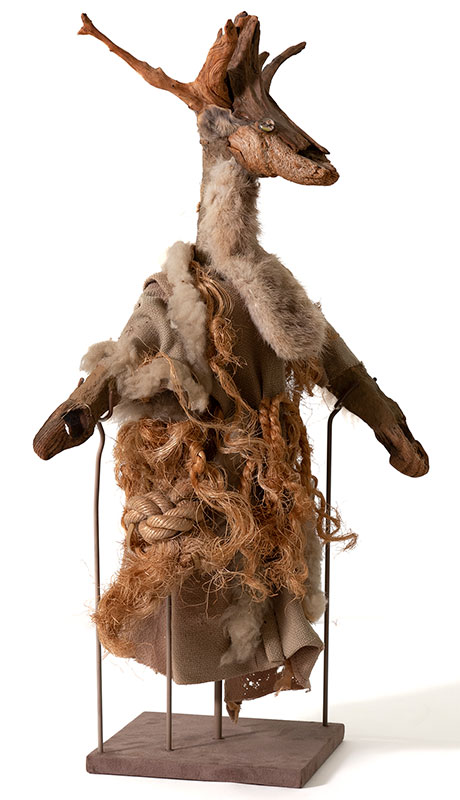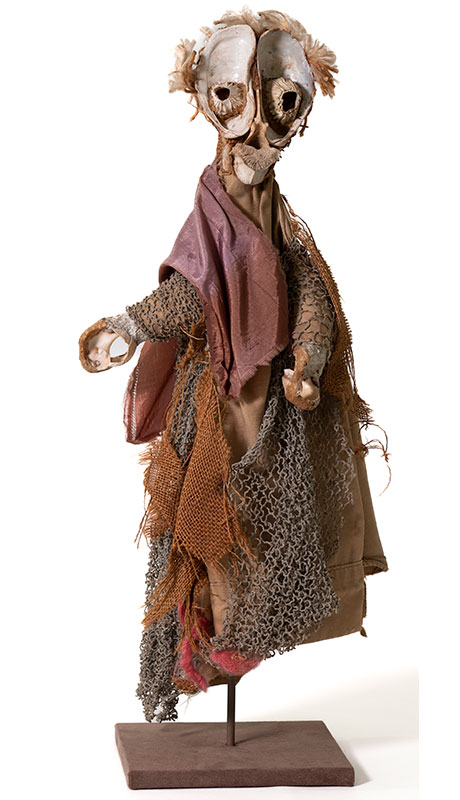For Bryan, the sea outside his door on Little Cranberry Island provided not only inspiration but also raw materials. He built many puppets out of odds and ends he found on the beach. Bryan named his puppets, drawing from The Book of African Names (Washington, DC: Drum and Spear Press, 1970), and wrote a poem for each.
Ashley Bryan (1923–2022), Osaze (puppet), 1956 and Nkosi (puppet), 1982
Kislak Center for Special Collections, Rare Books and Manuscripts, University of Pennsylvania
© 2022 The Ashley Bryan Center. Used with Permission.
From I Know A Man, directed by Richard Kane, 2016
Sandy Campbell: Ashley’s puppets are some of his most beloved creations. In this clip from the documentary “I Know A Man”, he describes how he makes them – or how they make themselves!
Ashley Bryan: You see, if you have two together, you'd see just the way they would look by their character. That would be all an audience would need, you know?
David Regan: It has a language of sound to go along with these gestures.
Ashley Bryan: I've been walking the shore and picking up driftwood, the bones, the seaglass, and I'm recreating from these images. It wasn't until people began asking where in Africa did I find these puppets, that I realized that that was the source that was directing and guiding me.
It's wonderful, what cast-off materials suggest, you know, and through the ages, people have worked with what's considered, um, not important. If I take a puppet, like these are just the mussel shells that get washed in, you see, the mussel shells, but it suggests a mask, a face. So if I take this and put it in my hand, and get it in there, so you see now, you see? And this is an old sweater turned over. Now it doesn't matter which one I may use, but they all work so that they come alive when they are taken off the stand. And you see how they will then work. It could be bones like these, people know these are stew bones, okay? Stew bones from different meats of your cooking. So when they get washed ashore and clean and whitened and you pick them up, well, it becomes a possibility of a puppet. When I was doing a play, I would say, this is a prince, this is a wise man, this is a fisherman, this is a carpenter. When you close a puppet in on a stage, they're absolutely believable, no matter what they look like. A little imagination, they come alive. So, everything I see becomes possible and it doesn't matter what it is. It's the silence of gesture. It's just a finger back and forth. But it tells everything in such a detailed way that you're often overwhelmed by the experience, you know, that that's why at the end of a puppet performance, if the performer then stands up in the stage area, you're always shocked because you've created a world which has a dimension of this, and not the person who stands up with it. You see? That's the magic of the whole experience, you see.


